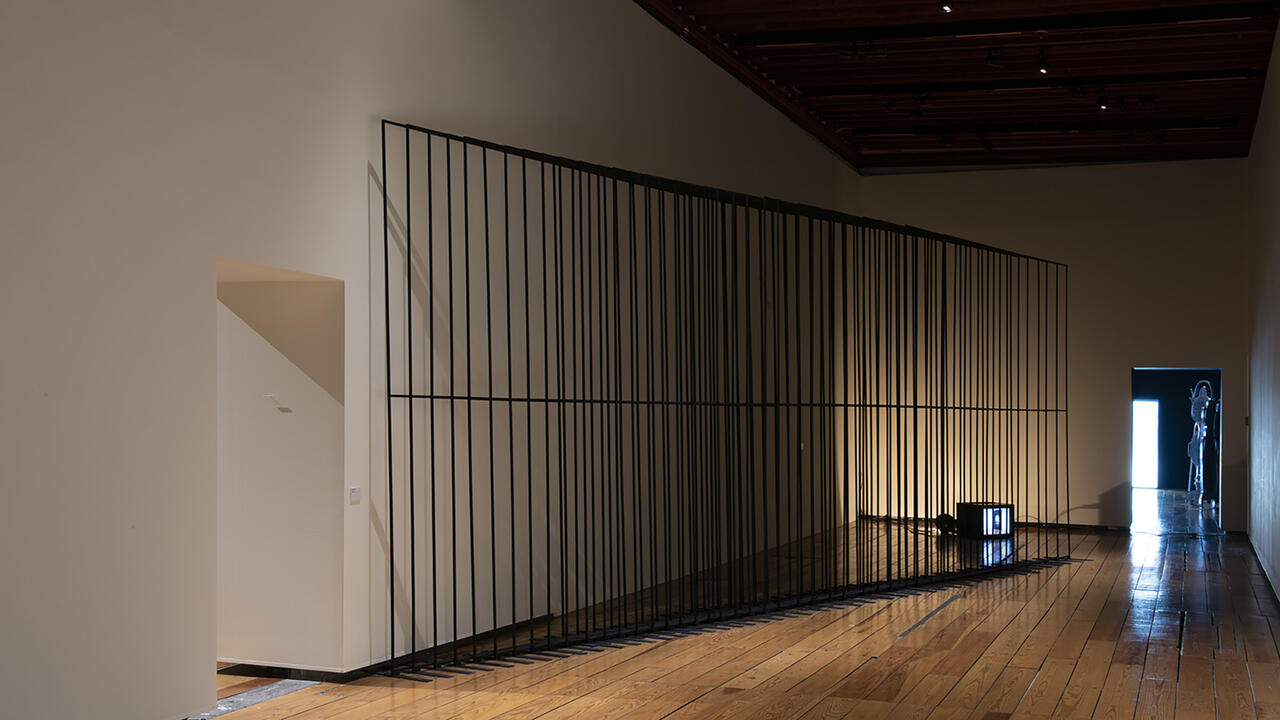Gregor Schneider

Gregor Schneider’s major new installation 'Weisse Folter' (White Torture, 2007), which takes its title from a term for psychological torture techniques that leave no bodily traces, is a rather nasty piece of work. Unlike his erratic 'Totes Haus u r' (Dead House u r, 1985–97), 'Weisse Folter', installed in the cellar space of K21, is uncannily smooth and clean. But appearances can be deceptive.
This disorientating art experience unfolds in a series of sinister and hermetic corridors, cells and rooms. Every five minutes, an unsuspecting museum-goer is permitted to enter an unmarked door, which leads to a first room that stinks of fresh paint and plastic flooring. From there, a sliding door emits a kind of scraping moan as it opens to reveal the first in a series of corridors. Here, already, the transition from the real to the simulated hyper-real is potent. Doors lead off from the corridors, but some of the doors are sealed, while others open to cells. One cell contains a green steel cage, another a two-way mirror with a steel bar passing through it that dissects your reflection. One door leads to a white corridor, and yet another door into a pitch-black space. As the aimless wandering and decision-making continues, stress levels rise.
Finding your way out involves navigating a further series of rooms, in which you are frozen, put in a hot metal container and detained in a kind of holding room. The transitions are unclear and uncomfortable; doors lock behind you at every stage. Ultimately, you pass through a plain door that spits you out of the building next to a pretty lake in the grounds of the museum onto a path with no obvious relation to the entrance. Annoyed by being so manipulated, but curious, I went back for a second visit and a third. I hid in the shadows and watched others work their way through. Visitors gathered illicitly – even though the idea is that everyone sees the work alone – and a middle-class patriarch boldly assured his family herd that he ‘knew the way’. A father took hold of his son’s hand as they stumbled along together in the dark. A sharply dressed young man looked palpably relieved as he gathered his wits outside by the lake.
The cells were inspired by downloaded images of Camp 5 Guantanamo Bay, although various parts of the work recall policing institutions generally. Was Schneider’s intention to dent the barrier that prevents people (himself included, presumably) who haven’t experienced such deplorable places and practices from empathizing with those who have? Schneider’s expert staging elevated the work beyond being a ghostly theme-park attraction. The world we live in isn’t so very different to 'Weisse Folter', it’s just that here the signs and consumption-driven comfort zones have been removed. And the topical political reference material notwithstanding, Schneider’s formal concerns are certainly apparent in his obsessive attention to detail: the soundtrack of doors opening and closing, of sealed rooms and the hum of air conditioning, the interlocking of standardized surfaces, the lighting and building materials, much of which he apparently assembles himself. The work is a kind of anti-monument, a synthetic non-space.
Contemporaneous to the K21 installation, Schneider also finally realized his large-scale public work, 'Cube' (2007), as part of the satisfying, if somewhat textbook, group exhibition ‘Das schwarze Quadrat. Hommage an Malewitsch’ (The Black Square. Homage to Malevich) at the Kunsthalle Hamburg. Originally intended for Saint Mark’s Square in Venice, but rejected by the Venetian authorities partly out of fear of it being misused as a backdrop for anti-Muslim propaganda, the work consists of an enormous black cube – made of scaffolding and plywood covered by a shroud of black cloth – inspired by the Kaaba in Mecca. For a while the Hamburger Bahnhof museum in Berlin also considered hosting the piece, but again it was vetoed by the head director of Berlin’s Prussian Heritage museums. But visitors to the work today would perceive nothing of its rather turbulent history. Like Christo and Jeanne-Claude’s Wrapped Reichstag, Berlin (1971–95) in 1995, this temporary monument is popular with a mixed bunch of locals who gather in its mute shadow. The local Muslim community have taken no offence. In fact, as imposing as it is, it could easily be mistaken for an expo-pavilion or a vast advertising gimmick. Seen as a pair of polar opposites, a holy shrine and a prison, Cube and Weisse Folter aren’t really just black and white: the first one taking it’s lead from Malevich’s modest painting from almost a century ago, represents perhaps the vastness of the imaginary’s potential – the other the means of crushing it.














